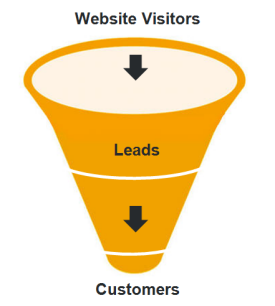The 1st step to a successful website redesign is to determine why you need a redesign at all. Actually, website redesign is a continuous process that is just as much about functionality as it is design. There are definitely good reasons for a website redesign. To be successful you must think it through and set your redesign goals.
Wrong Reasons For Redesign
“We have a new corporate look and feel.”
“Itʼs been 12 months since our last redesign.”
“The CEO wants to do it.”
Right Reasons for Redesign
“Want to get found by more prospects.”
“Want to convert more prospects into leads and eventually, customers.”
“We want to improve branding.” (Only appropriate if oriented around one of the previous reasons.)
Misguided reasons for redesigning your website are driven by the thought that the freshness and “wow factor” of a new website will increase excitement over your brand. The main motivations behind website renovations should be to improve the performance of your website. A beautiful website, although intriguing and aesthetically pleasing, is secondary to a functional traffic and lead generating website.
Don’t guess – find out how to do it right! Download our free ebook: 7 Steps to Successful Website Redesign today!

{ 0 comments }

 Smart phones have changed the way people shop, communicate and live. According to a survey by telecommunications equipment vendor Ericsson, 35 percent of Android and iPhone owners in the U.S. use apps such as Facebook before getting out of bed. In 2010, over 50% of internet access was done via a handheld device. Many of the under 30 crowd don’t have a land line and never use yellow pages.
Smart phones have changed the way people shop, communicate and live. According to a survey by telecommunications equipment vendor Ericsson, 35 percent of Android and iPhone owners in the U.S. use apps such as Facebook before getting out of bed. In 2010, over 50% of internet access was done via a handheld device. Many of the under 30 crowd don’t have a land line and never use yellow pages. Is your website a static brochure or is it a lead generating machine? When people think about designing a website, or redesigning a website, they sometimes overlook the most obvious question which is, “Why?” Why do you want a website or a redesign? Often we hear that the reason is to get a “fresher look” or to incorporate new products or services. Sometimes, business owners want a redesign so they can make edits themselves. However, once they are able to make edits and add content, many times, the website still remains static and changes are seldom made.
Is your website a static brochure or is it a lead generating machine? When people think about designing a website, or redesigning a website, they sometimes overlook the most obvious question which is, “Why?” Why do you want a website or a redesign? Often we hear that the reason is to get a “fresher look” or to incorporate new products or services. Sometimes, business owners want a redesign so they can make edits themselves. However, once they are able to make edits and add content, many times, the website still remains static and changes are seldom made. SEO (search engine optimization) is the next step in our internet marketing strategy. If you are following along as we go through the steps included in the
SEO (search engine optimization) is the next step in our internet marketing strategy. If you are following along as we go through the steps included in the